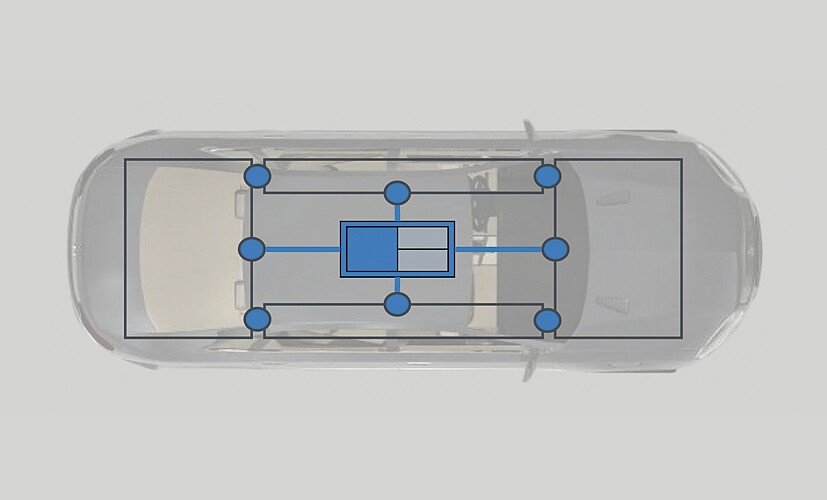Siemens is developing new technology aimed at transforming electric cars into "rolling computers" controlled by a centralized computing architecture. According to Siemens, not only will it be possible to retrofit functions such as electrical brakes using a plug-and-play process (like on home PCs) but developers will also be able to push new software functions and updates out to vehicles – just like how it's currently done with smartphones.
Partnering with electric vehicle manufacturer StreetScooter, Siemens researchers plan to equip an electric car, based on the design of the Roding roadster electric car, with this innovative framework. Part of the RACE (Robust and Reliable Automotive Computing Environment for Future eCars) initiative, the project aims to significantly simplify a car's complex electronics architecture and do away with the need to network multiple control systems.
"Today's cars already contain a multitude of electronic control units (ECUs)," Cornel Klein, Project Manager of RACE, tells Gizmag. "Up to 70 to 100 different computers of various kinds are used to fulfill various functions, like engine control, infotainment systems or advanced driver assistance systems like lane keeping. This 'E/E architecture' uses a multitude of different technologies for communication and integrated components from quite different suppliers; the complexity makes the implementation of new functions time-consuming, particularly when it comes to safety-critical functions like steer-by-wire or autonomous driving. Moreover, new functionality can not be retrofitted once the car has been produced."

Instead of trying to reduce the number of ECUs or re-use existing software and system structures in different ways, Klein explains that the RACE approach aims to completely re-think this E/E architecture. The researchers plan to equip the car with a platform where new applications can be downloaded as software modules, similar to apps in smartphones.
The platform is also expected to provide an API (application programming interface) to access all vehicle sensors (like cameras, the steering wheel and braking pedals) and vehicle actuators (such as the power steering motor and braking system). All these features, according to the team, will make delivering software based innovations a whole lot easier.
"Any kind of software can be pushed to the car," Klein tells us, "A good example for such 'apps' are new driver assistance functions or infotainment functionality, which can hardly be retrofitted in today's cars."
The app approach is expected to increase customization, vastly reduce development, integration times, costs and be scalable across vehicle types. It will also be possible, the team says, to extend the features of the car post-purchase, with new sensors, actuators and software functions increasing its overall life cycle.
However, a centralized computing architecture is also more vulnerable to hardware failures, a fact the scientists tackle by integrating several redundant computers into the design, to ensure that all systems operate smoothly in the event that anything untowards occurs.
"We will have at least three so-called 'Duplex Control Computers' (DCCs)," Klein tells Gizmag. "Each DCC in turn is a pair of computers, executing exactly the same computations. By comparing the results of these computations every 10 minutes, we can detect a failure in one of the DCCs. If this is the case, one of the remaining DCCs can take over. Likewise, our network is redundant, such that every sensor-/actor can communicate with the centralized computing platform via two paths. The concept is quite similar to the 'fly-by-wire' approach, already deployed in modern aircrafts."
Additional safety mechanisms, like the authentication of new hardware components, are also being integrated into the prototype. Siemens plans to unveil the RACE electric prototype this December in Munich, Germany.
Source: Siemens






